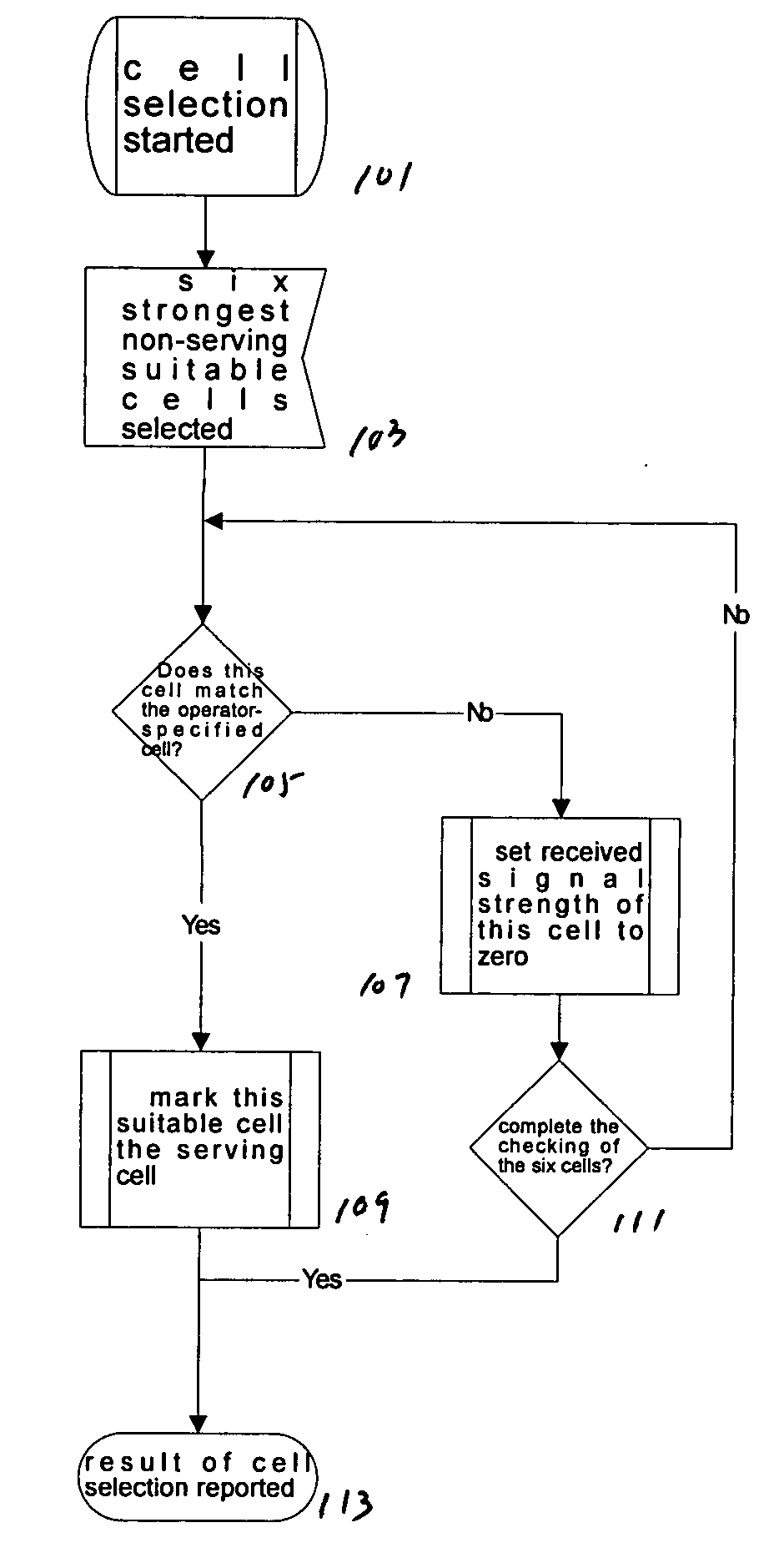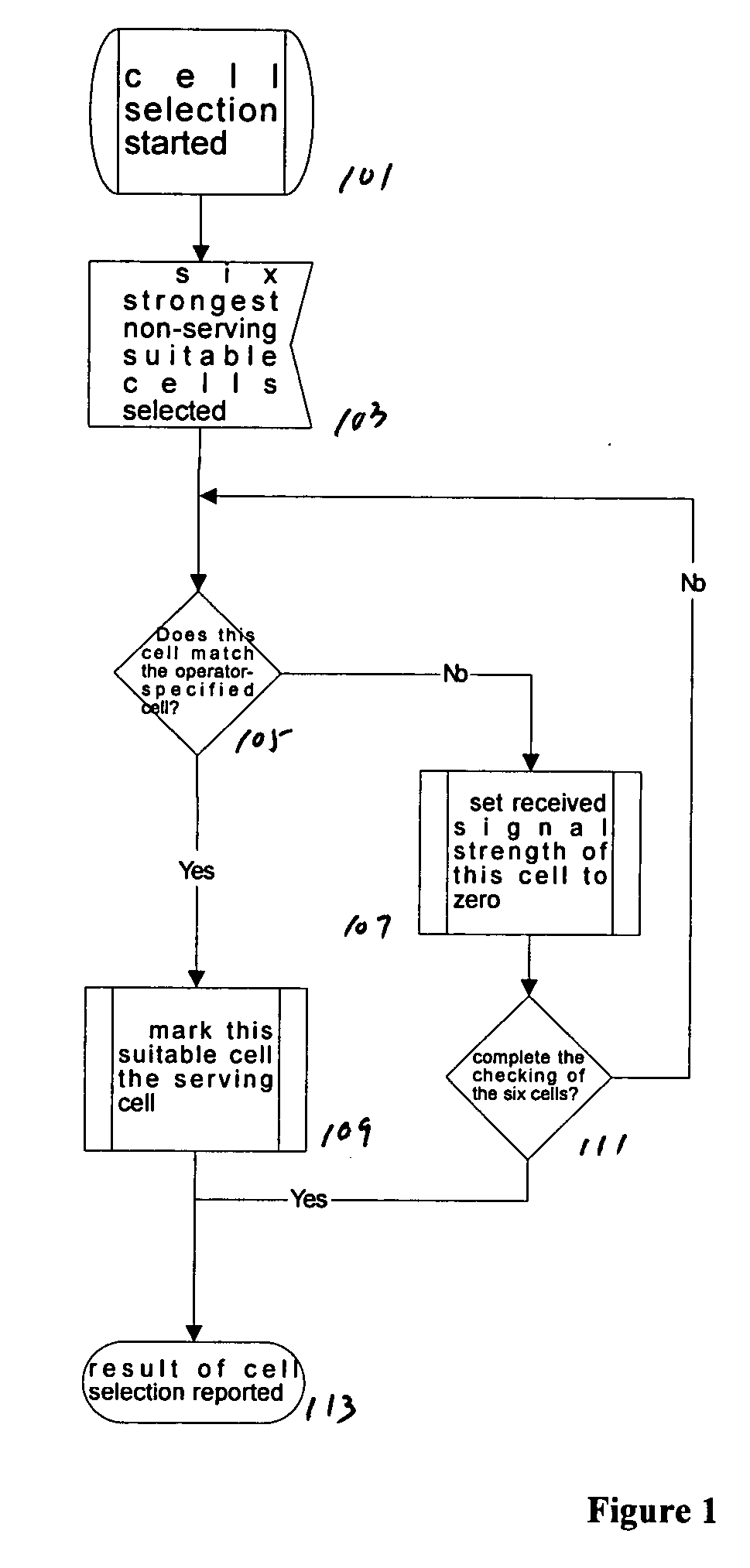Method for cell locking in a wireless communication device
a wireless communication and cell technology, applied in the direction of radio transmission, electrical equipment, assess restrictions, etc., can solve the problems of affecting the inability of the wireless terminal to work at all, and the limited service state of the wireless terminal, so as to ensure the normal functioning of the phone and avoid interruption.
- Summary
- Abstract
- Description
- Claims
- Application Information
AI Technical Summary
Benefits of technology
Problems solved by technology
Method used
Image
Examples
Embodiment Construction
[0013] With reference to FIG. 1, a cell locking method described herein may be implemented in any wireless communication device, such as cellular phone.
[0014] As seen in FIG. 1, when a wireless device is turned on or enters a new service area, a cell selection process at box 101 begins. At box 103, the wireless device selects a maximum number of suitable cells. In this particular example it is six, but can be more or less. Indeed, in some situations, the wireless device may only detect a signal from less than six cells. The wireless device, for each detected cell, synchronizes to and reads the information for the cells.
[0015] Next, as described with boxes 105-111, the wireless device checks each of the six cells in descending order of received signal level (strength) to determine whether the cell belongs to one of the operator-permitted cells. Thus, at box 105, for each of the selected cells, a determination is made whether the cell is an operator-permitted cell. An operator-permi...
PUM
 Login to View More
Login to View More Abstract
Description
Claims
Application Information
 Login to View More
Login to View More - R&D
- Intellectual Property
- Life Sciences
- Materials
- Tech Scout
- Unparalleled Data Quality
- Higher Quality Content
- 60% Fewer Hallucinations
Browse by: Latest US Patents, China's latest patents, Technical Efficacy Thesaurus, Application Domain, Technology Topic, Popular Technical Reports.
© 2025 PatSnap. All rights reserved.Legal|Privacy policy|Modern Slavery Act Transparency Statement|Sitemap|About US| Contact US: help@patsnap.com


